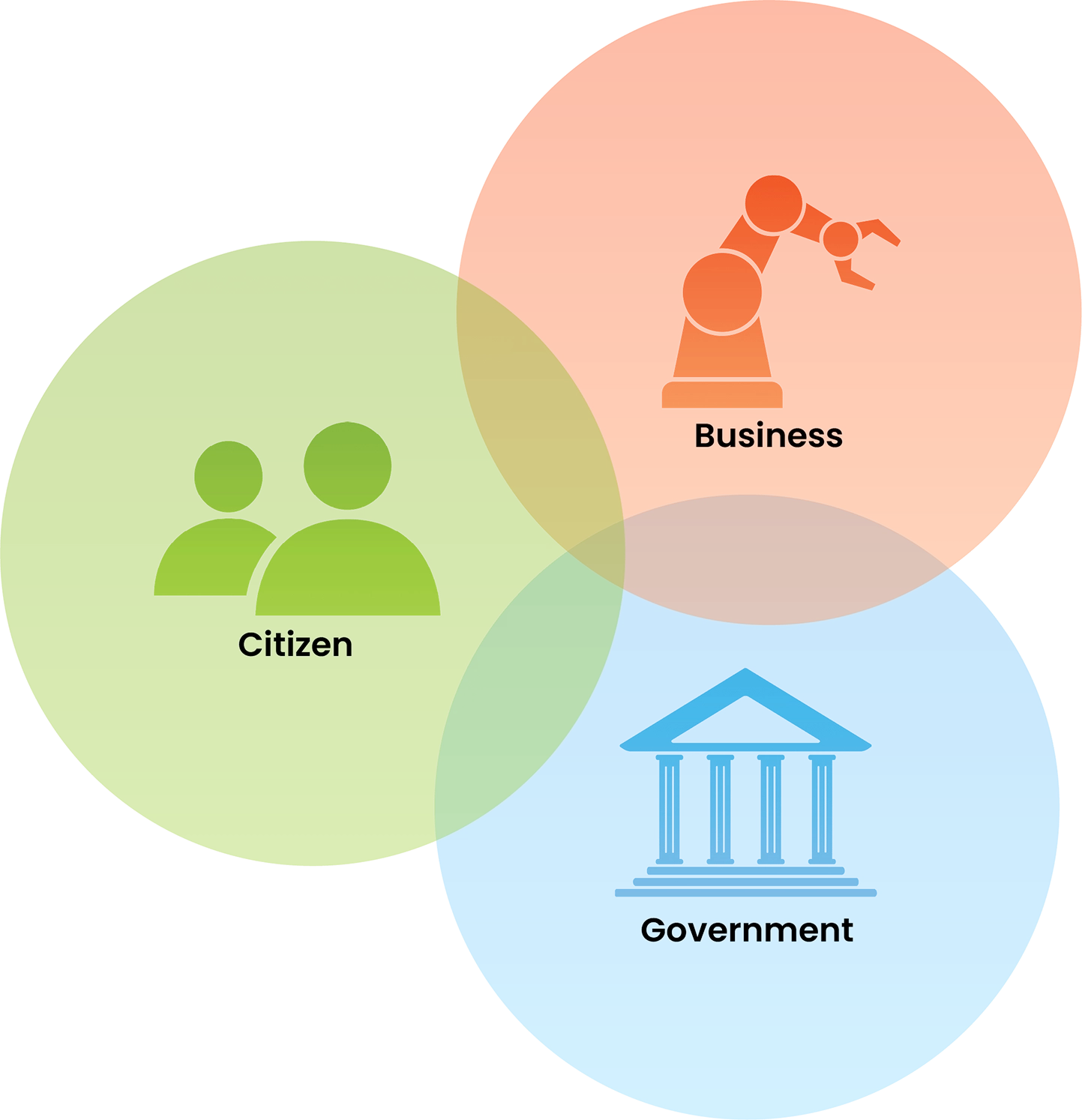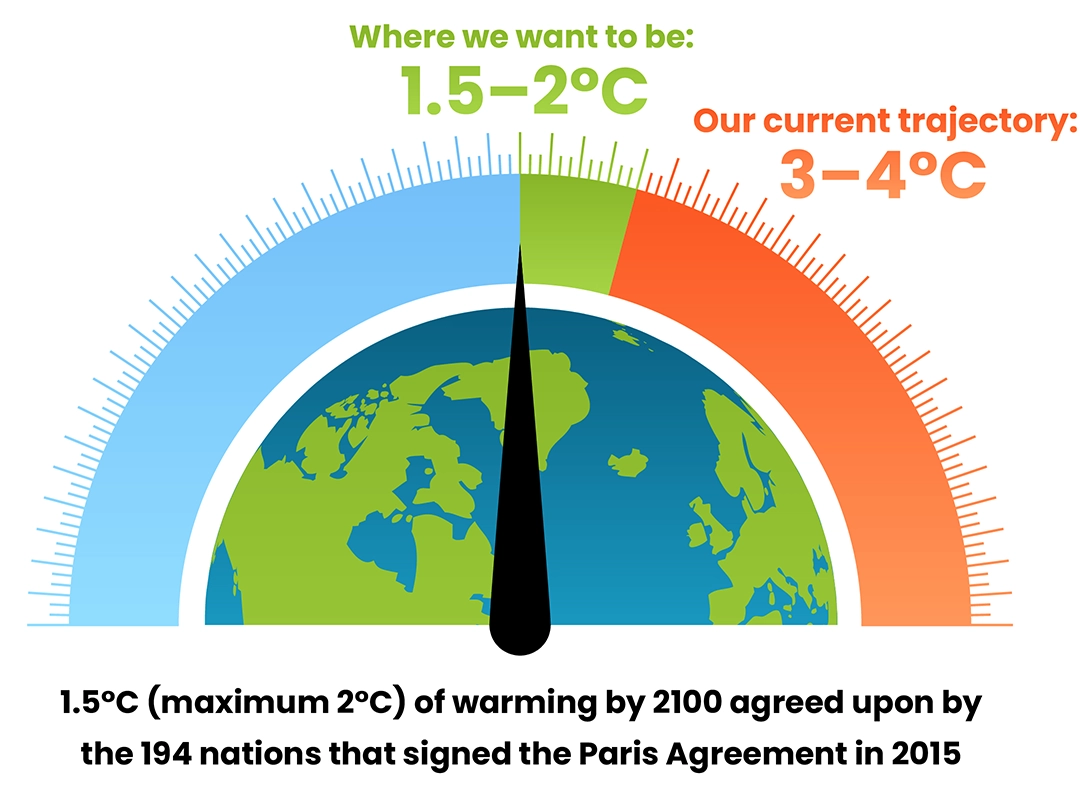Areas of Action: Your Voice and Your Time
Using your voice and, if possible donating your time is a critical way to help get the support you need to reduce your own footprint and join the large number of people that are motivated to address the climate crisis.
Citizen support drives bolder government and corporate action. Support for climate leaders makes them more effective. Communicating and demonstrating action influences those around you.
Have your say in protecting the planet. It’s your world too!
What needs to change?
Feelings of worry, guilt, and helplessness about climate change, turning away from the news and avoiding discussions of the issues we are facing.
Feeling optimistic, motivated, empowered and engaged without guilt, facing the problem directly, participating in solutions and using our voices and votes to help drive systemic change.
Why is this so important?
We, as citizens, can’t reduce our own footprints in line with a 1.5°C world without the help of companies and governments.
Companies and governments can’t drive systemic change without our support. They need to know you care.
The more we talk about change in a positive and encouraging way, the more informed we become, the more often brilliant ideas and solutions are shared, the more often barriers are overcome and myths are debunked, the more empowered we are and the more people take action.
Using your voice and volunteering your time are also areas of action that can be personalized to what works for you and what you care about most.

Why so urgent?

There is a rapidly narrowing window of time to implement existing commitments and raise ambition1. See Why So Urgent?
As per the Paris Agreement and subsequent IPCC modelling and research updates, we need to reduce our emissions by 43% below 2019 levels by 2030 in order to have a good chance of hitting Net Zero emissions by 2050 and avoiding the worst impacts of climate change.
Here are some of the ways you can use your voice.

We need to talk about addressing the climate crisis. It is the most pressing issue of our time and also the biggest threat humanity has ever faced. We have many of the solutions and they will be implemented. What is not certain is how long it will take us (and how much damage we will cause because of the delay.)
How to talk about climate change and not be the downer at the party:
The key to discussing the climate crisis is to remember that we are all in this together. Most of us are not childless, vegan, off-the-grid hermits and individual action is less about the Carbon Footprint of a specific individual (with the exception of most billionaires) than it is about being part of the energy transition off of fossil fuels and, more generally, a shift towards sustainable, prosperous lifestyles, achieved by taking personal action and by supporting and driving systemic change.

Avoid the temptation to finger point — even if it comes from the good intentions of sharing information — and instead focus on sharing positive information about the shifts that are happening and what you are doing to take action.
Reinforce that it is a process for all of us even though it is very urgent. Share that you care about addressing the crisis. Stop talking to people that disagree with you. Kidding. Don’t judge people for inaction. But counter misinformation when you hear it!
A majority of people care about the climate crisis and it is only through facing it with understanding and communication that we will take the proper action to address it. Making a personal credible and doable plan with integrity will empower you to talk about it without guilt or feeling hypocritical and help others take action as well.

The scope of what you can do at work depends, of course, on the nature of your company and your role within it and the orientation of your company’s leadership towards climate action.
Some things are often within the scope of each employee’s control or at least things they can advocate for and many of these are the same things you can control or try to change at home.
Examples may include how you commute to work and whether you can work remotely at least some of the time, whether you recycle (including electronics), use paper, eat sustainably, think about energy efficiency etc.

If your company is early in its climate journey (remember, everyone must and will decarbonize — the question is how quickly) you can perhaps advocate for policies in the areas above or help to drive cultural changes within your area of the company.
For example, in the area of employee commuting and travel, you may be able to advocate for public transit benefits, an EV charging station, a bike rack, a carpooling policy, remote meetings and online/hybrid events, retaining hybrid work and sustainable business travel policies.
Another suggestion is to look at comparable or larger companies in your industry and share any sustainability reports they may have, or look for associations, coalitions or climate experts in your sector to better understand and share information about how your company can take action.
I have shared some examples of the latter in The World Is Already Doing More Than You May Know section of the website. Consider starting (or joining) a green team or sustainability crew.
Ideally, each company will be able to either take a greenhouse gas (GHG) inventory or at least understand their major contributions to their Carbon Footprint and then make a formal plan to address them. This sort of approach requires leadership support and, often, company-wide involvement and buy-in.
There are many third-party consultant organizations (e.g. Deloitte, KPMG, PwC etc), software tools, certification bodies like BCorp and other non-profits that can help with this process. Look for local support organizations, for example, SustainableWaterlooRegion (a member of Green Economy Canada), that help businesses measure their Carbon Footprint, make a reduction commitment, transparently report on progress over time and collaborate with other organizations on similar journeys.
If you have a specialized corporate role such as finance or HR, there are a ton of resources available specific to climate action in your roles that you can search for. Here is an example for accounting/finance.
In any role, look for intersections between climate action and other company initiatives, priorities, goals, or even risks and ways to communicate the ways that climate action and climate considerations advances those priorities or decreases risk.
If your company is already taking action, find out how you can help! Focus on impact over actions and help to celebrate and market your company’s successes.
Alternatively, if your company is not aligned with your values and you consider leaving as a result, or if you are looking for another job for unrelated reasons, consider asking your prospective employers about their stance on sustainability and climate action.
Recruitment is one of the drivers of climate action for business. Alternatively, you could consider a green career.

Talk about it in your community — where you spend your time (leisure activities, events, volunteering, shopping)
You can take some of the actions suggested above for your workplace to the other areas of your life as well.
Ask questions of the other organizations and companies you may be involved with or venues you may frequent to see if they have action plans, make suggestions or request sustainable alternatives to unsustainable status quo options.

Provided that you are not judgemental (there are often valid barriers to inaction that need to be overcome and you can’t always judge from the outside), your suggestions may be welcome and helpful and will at least communicate that it is important to you.
For example, if water bottles are the only option at an event, suggest that they provide a water source and allow refillable bottles.
Most companies and non-profit organizations care about customer service and client/volunteer engagement. Many also care about climate action and your advocacy will encourage climate initiatives, help direct their efforts and/or give them a chance to share their impact if they are already taking action.

Sign an online campaign or create one
There are many organizations that you can visit online and/or subscribe to that create online campaigns to address the climate crisis (incl. plastic and air pollution) as well as peer-generated campaigns you can join.

They vary in focus and in geographic scale/location so you may want to do a search in your own area, but given that this is a global crisis, it doesn’t hurt to raise your voice in as many places as possible.
This is one of the easiest and least time-consuming ways of taking action, particularly If you subscribe to the organization’s communications as they then come to your inbox. You can also browse website campaign pages to find ones you want to support.
Some Canadians steer away from what they see as political action, but you don’t have to become a paying member of an organization to sign a letter advocating for something you already care about. And you can easily opt out of future communications with a simple click if you want to see how organizations approach issues and then decide if you want to stay in touch or not.
Ontario Clean Air Alliance
(a particularly good organization IMO—look for organizations in your province too)
You can also look for specific climate related campaigns at Change.org, Leadnow, Avaaz and other similar citizen action organizations, or start a campaign yourself!

If you are active on social media, this is a great place to share information and action and amplify the messages of others.
It doesn’t have to be directly about the climate either. Sharing your favourite low carbon recipes or sustainable clothing sources are great ways to drive systemic change too.

It is also really important to respectfully and factually counter misinformation and disinformation wherever you see it online.

Write to companies, influencers, magazines
Sending a message directly to the companies/brands you love, influencers and celebrities you follow and other information sources like magazines that promote brands and products is a great way to take action that does not take much time and does not cost money.
Ask brand promotion sources if they currently incorporate or would consider incorporating sustainability and climate impact in their assessments.
Ask companies how sustainable the products you love are or if they have sustainable alternatives.

Ask magazines and other periodicals if they have online-only subscriptions if you are currently getting physical copies mailed to you.

Write or talk to your local political representatives
It is really important to let politicians at all levels of government know that you care about the climate crisis. Make your representatives represent you — whichever party they belong to.
Calling or sending a letter to your local representatives asking them about specific issues that concern you or just letting them know that this is an important issue that will impact your vote will help to encourage climate action and help them refrain from backing down on climate policies in the face of opposition.
Often you can find starting point templates for letters in the campaigns referenced above.
Terracycle has examples (for both companies and legislators) in the link below regarding waste.

Write an op-ed
This one is not for everyone but a great option for some. There are a lot of op-eds that spread misinformation and disinformation on climate change.
Counterbalancing these with factual, and ideally optimistic information is welcomed. If you have writing gifts, are concerned about climate change and can make the time to write an article, please do!

Volunteer at an environmental organization
If you have some time and want to help drive more systemic action, consider volunteering with an Environmental NGO (ENGO.)
There are so many ENGOs to choose from, including some of the organizations listed above.

Use your vote!
Last but not least… of course, a critical way to voice your concerns about the climate crisis and climate action is at the ballot box.
It doesn’t matter which party you lean towards. Any elected leaders have to address climate change urgently. We don’t have time for individuals that cannot or will not lead on this issue.

Your voice matters. It’s your world too.
Speaking out works!
Summary of potential actions
• Share ideas and information with family and friends
• Share ideas and information and take action at work
• Talk about climate change in your community
• Sign an online campaign or create one
• Share and support information and campaigns via social media and counter misinformation
• Write to companies, influencers, magazines
• Write or talk to your local political representatives
• Write an op-ed
• Volunteer at an ENGO
• Use your vote!
Ready to get started? Build a plan that works for you here.
References
1. Environment and Climate Change Canada. (2022). 2030 Emissions Reduction Plan — Canada’s Next Steps for Clean Air and a Strong Economy. https://publications.gc.ca/collections/collection_2022/eccc/En4-460-2022-eng.pdf

